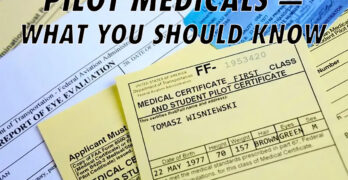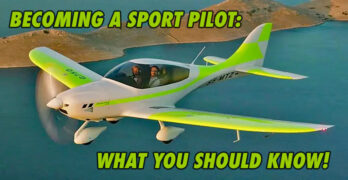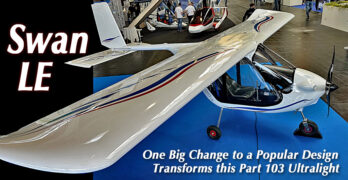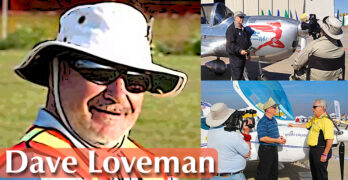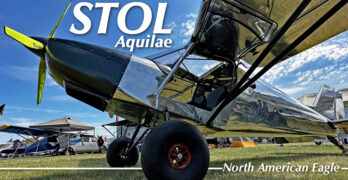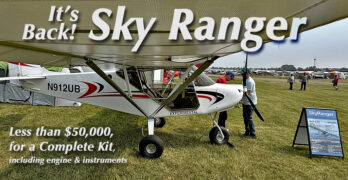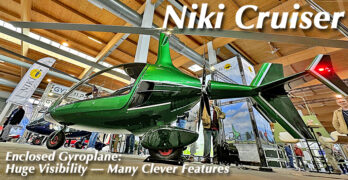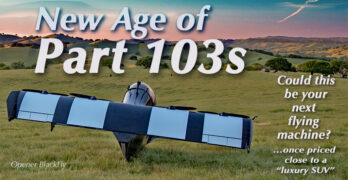For most pilots, the FAA Airmen’s Medical Certificate is a fundamental requirement for flight. This certification guarantees that the pilot meets the medical standards necessary for safe operation of an aircraft. But there are exceptions, and understanding them is crucial, particularly for pilots facing challenges with their medical certification.
Medical Qualifications: Contention and Controversy
Discussions about medical qualifications often lead to disagreements and controversy. Even though I am not a member of the FAA FAASTeam, I regularly attend WINGS seminars. These discussions consistently arise at the end of many presentations, regardless of whether the presentation is related to medical issues.
The typical statement is usually something this: “A Sport Pilot does NOT need an FAA Medical NOR BasicMed.” They are usually referring to the to the use of a U.S. Issued Driver’s License to exercise Sport Pilot privileges. While this is true at a surface level, the answer is more nuanced and not for the reasons many pilots mistakenly believe.
Search Results for : Revo
Not finding exactly what you expected? Try our advanced search option.
Select a manufacturer to go straight to all our content about that manufacturer.
Select an aircraft model to go straight to all our content about that model.
Sport Pilot Certificate – What You Need to Know
The Sport Pilot Certificate has emerged as a popular option for aspiring pilots who want to experience the joy of recreational flying without the extensive time and financial commitment required for a Private Pilot Certificate. It’s been with us for two decades but there are still questions about the SP certificate. Here’s a rundown.
There are seven main categories of aircraft for which you can be a Sport Pilot, each with variations on training and pilot requirements specific to that Category. This article will be specific to the Airplane Category.
What is the Sport Pilot Certificate?
The Sport Pilot Certificate allows pilots to fly a Light Sport Aircraft (LSA). These aircraft are typically smaller, simpler and more affordable to operate. Key characteristics of LSAs include:
Maximum takeoff weight of 1320 pounds (or 1430 for seaplanes)
Maximum airspeed in level flight of 120 knots under standard atmospheric conditions
Maximum stall speed of 45 knots in landing configuration
Single, non-turbine engine
Fixed pitch or ground adjustable propeller
Fixed landing gear (except for seaplanes)
Note that all of these are under the current LSA/SP rules and are likely to change when MOSAIC becomes reality next year.
MOSAIC – A Different Perspective
A lot has been written about the contents of the MOSAIC NPRM and many people and organizations have been able to comment on it to the FAA. Much of the commentary has been around the extension, or in some cases, curtailing of existing privileges for Sport Pilots, aircraft that can fit into the Light Sport definition and Light Sport Repairman certifications. I don’t plan to re-hash any of that here. This article will focus on what some of these changes could mean, in practical terms, to the market for Light Sport Aircraft and its customers. As you will see, it has the potential to be highly disruptive which not everyone will be happy about but will do so in a way that also opens up opportunities to a wider audience.
Before delving any deeper, let’s dispel the myth held by some in general aviation that Light Sport has been a “failure”.
AVI’s Affordable, Foldable, Composite Part 103 Ultralight Aircraft Gets a Fresh New Look
Aeromarine LSA’s Chip Erwin is one but certainly not the only busy fellow in the modern Part 103 aircraft space. AVI’s Radu Berceanu is another a man on the move. Chip works in metal. Radu works in composite. You know Chip better (he’s adept at PR) but you probably know Radu’s designs. Readers have responded enthusiastically to articles and videos about Swan.
In an earlier article I promised a video look. Now that the flying season is easing into the holidays, I have more time to spend editing videos. What takes a few minutes to shoot takes hours to edit but I’m pleased to let you hear from Radu himself. His English is quite good and you get a lot of views of the new & improved Swan, now called Swan LE.
Fresh Swan Retake
The article from April this year had additional detail for Swan LE and mentions Dracula, the subject of a future video and article.
Dave Loveman: Pilot, Videographer, Engine Expert, and Aviation Leader… One Unique Individual
As you can surely tell by all the images, and by the lead picture, this story is only about airplanes in the sense that it covers one of the most productive people in light aviation. I refer to my longtime associate, Videoman Dave, as I enjoyed calling him.
At the end of October 2023, his daughter Nicole emailed me to say that Dave passed peacefully in his sleep following a two-year battle with plasma cell leukemia, a very rare form of cancer with limited treatment options. Many of you have asked about him at airshows this year and I reported what I knew. Dave was not one to complain about his situation so when we spoke, we mostly kept our conversation on airplanes.
Nonetheless, the facts became increasingly obvious. All you had to do was check his YouTube channel. At the end, more than 11 months passed since his last entry.
Latin for Eagle, Aquilae is A New Kit Entry in the STOL space from North American Eagle
Let’s get that name dealt with right away — say “ACK-will-lay.” The model name looks more awkward than it is and sounds more graceful than it looks. The word translates from Latin as Eagle. Though unusual, Aquilae is a worthy name for a light aircraft.
When you glance at the photos nearby, do you get the feeling you’ve seen this before? You should, but you may be wrong.
Popular Design Configuration
Aquilae looks very much like but is not the G1 STOL seen earlier (see this article). Some years before G1 arrived here in America, I’d written about French-produced version after seeing it equipped with hand controls and with its wings folded compactly on a trailer at the German Aero Friedrichshafen show. The basic design has been flying for close to 25 years.
Originally developed as the Yuma by Alisport, a French company, the design was later taken over by G1 Aviation, another French company that does extensive machine shop work for several aircraft builders.
A Return to 2004 LSA Prices in 2023 As SkyRanger and Nynja Return to Market
I write about affordable aviation whenever interesting material is available. This website will eventually (probably by August or September) move to the AffordableAviation.com domain that I purchased many years ago. It’s important to me that pilots can actually afford to own and fly their own aircraft because I am one of you.
I maintain you’ve always been able to find affordable new airplanes but you had to accept something other than a 150 knot four seater.
Part 103 has always been a choice — no medical, N-numbers, or pilot certificate needed — yet not everybody wants that. A great many pilots desire a two seater, even if they nearly always fly it solo. You usually pay more for a two seater, making it less likely to be affordable.
One modestly-priced two seater is available, fortunately.*
A Genuine Bargain?
One flying machine made flying affordable some years ago but it rather quietly slipped from the American market.
Aero ’23 Continued — Superpowered Niki Aviation Cruiser Gyroplane Shows Stylish Innovation
If the bright green didn’t catch your eye, the unusual placement of the propeller probably did. Or maybe it was one of a dozen other fetching attributes to this handsome rotary-winged aircraft.
What you could not easily see was the engine selection. As up-to-date as they can be, Niki is offering either a 141-horsepower Rotax 915iS or the just-released 160-horsepower 916iS. The latter with a lighter load can reportedly climb better than 2,500 feet per minute.
As I cruised the immense (basketball gymnasium-sized) halls of Aero 2023, I saw all manner of beautiful flying machines. In four days of the show, I find it unlikely you can even visit all of them much less become well informed about a majority.
When I happened across Niki, I remembered they had sent an invitation to come by and look at their engaging designs. Company co-owner Miglena Kopcheva was kind enough to show me around the green machine you see nearby.
2022 In Review — How Did LSA and Sport Pilot Kit Aircraft Fare During a Turbulent Year?
The year started with hope. As 2022 arrived, America and most countries (China excepted) were emerging from two years of difficult lockdowns and Covid. The good news was that a flood of money from the U.S. government had buoyed the stock market and I’ve long observed that in a rising equities market, LSA and SP kit aircraft sell well.
No one thinks this is because anyone sells stock to buy a Light-Sport Aircraft. Rather, it’s something economists call the “wealth effect,” where rising asset values give stockholders confidence that good times are here and they can buy an airplane to have fun.
Then… Russia invaded Ukraine and global markets trembled.
Despite a year of war, of plunging stock markets and sky-high energy prices, of protests and riots in multiple countries, plus on-going supply chain strains and lingering Covid fears, the light aircraft nonetheless grew by a very healthy 18%, after rising 10% in 2021.
Invasion of the Part 103 Multicopters — Surveying 5 Entries, All “No Pilot License Required”
These new-millennia flying machines have inspired multiple names. While an eventual winner is determined, a common handle seems to be the rather awkward “eVTOL” — for electric vertical takeoff and landing. A range of abbreviations are also used: UAV, UAM, UAS, autonomous aircraft, and several others. I like multicopter — because all of them involved multiple propellers doing the lifting.
Most commonly, you hear “drone.”
Yet “drone” is further confusing because we haven’t separated crewed aircraft from uncrewed aircraft and this is a major distinction. FAA has also made this separation, so for this article, I will only speak of crewed aircraft, that is, a flying machine with a pilot using controls to direct its flight. In addition, I will also stick solely to single place aircraft that can theoretically qualify as a legitimate Part 103 ultralight vehicle.
Let me first extend a quick thanks to IEEE’s Spectrum magazine for making me aware of entries I’d missed.
- « Previous Page
- 1
- 2
- 3
- 4
- …
- 15
- Next Page »


